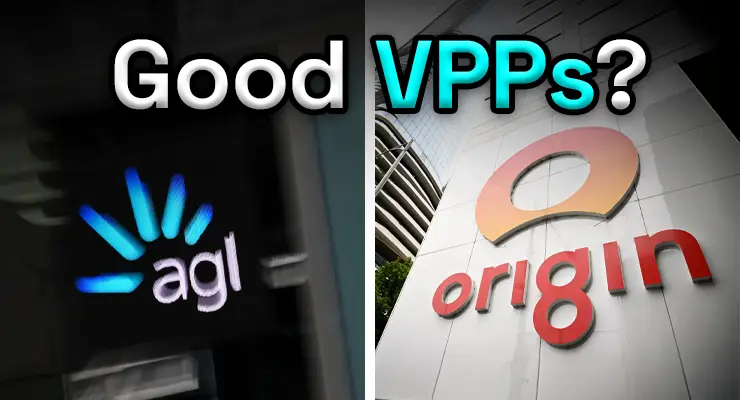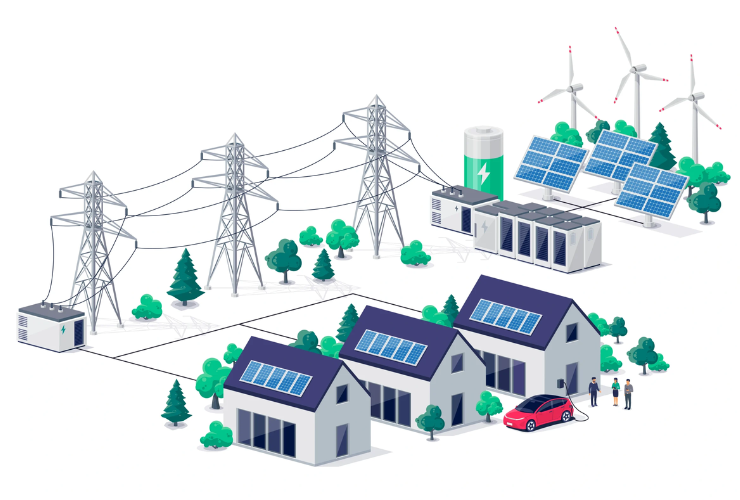Fast read
Joining a Virtual Power Plant (VPP) offered by a major electricity retailer may seem convenient but requires caution. These programs can lock you into uncompetitive electricity plans and long-term contracts with hefty exit fees. You might also have less control over your battery, potentially impacting its lifespan and your blackout protection.
Why should I avoid a VPP with an Energy Retailer like AGL or Origin?
Deciding whether to join a Virtual Power Plant is one of the most common questions we get from homeowners with a new or existing battery. The idea of earning extra income from your battery is appealing, but not all VPPs are created equal. You’re asking specifically why you should be cautious about joining a VPP directly with a major electricity retailer like AGL or Origin, and it’s a very smart question to ask.
While these large companies offer seemingly attractive deals, they can come with hidden trade-offs that might not serve your best interests in the long run. This article will walk you through the key considerations, helping you understand the potential downsides and what to look for in a VPP agreement.
How do retailer-VPPs work?
First, it’s helpful to understand the model. A VPP is a network of home solar batteries, connected and managed by a central operator. This allows the operator to use the combined stored energy to support the electricity grid, especially during peak demand. In return for letting them control your battery, you receive financial benefits.
When a major retailer like AGL or Origin runs the VPP, they are both the operator and your electricity provider. This integrated model can lead to specific conflicts of interest and limitations that you wouldn’t necessarily encounter with different VPP models.
The catch: Being locked into their ecosystem
One of the most significant drawbacks of a retailer-led VPP is that you are almost always required to be on one of their electricity plans. This might seem logical, but it can lock you out of finding a better deal elsewhere. Energy markets are competitive, and what seems like a good electricity rate today might be uncompetitive in a year’s time.
Furthermore, the feed-in tariffs (FiTs) offered by large retailers are often lower than what smaller, more agile companies might offer. With FiT rates already declining across Australia, being tied to a plan with a low rate can significantly eat into your solar savings, potentially negating the benefits you gain from the VPP.
Reading the fine print: Contracts and exit fees
VPP offers that include a large upfront discount on a new battery often come with long-term contracts. While not universal, it is in this context that you might see a five-year term. If your circumstances change and you want to leave early, you could be facing a substantial exit fee. For instance, AGL’s VPP agreement for customers who receive a battery discount has a five-year term with a pro-rated exit fee. If you received a $1,000 discount and left after 12 months, the exit fee would be $800.
This contrasts sharply with the growing number of flexible options. Many “Bring Your Own Battery” (BYOB) programs, including those from major retailers like AGL and Origin, have shorter 12-month or no-lock-in contracts with no exit fees. This increased flexibility is critical if a more innovative VPP model appears or your energy needs change (for instance, you buy an electric vehicle).
Who is really in control of your battery?
When you join a VPP, you hand over a degree of control of your battery. A retailer’s primary goal is to use your battery to benefit their position in the energy market, which may not always align with your goal of maximising self-sufficiency.
This can lead to a few potential issues:
- Increased Wear and Tear: The VPP may cycle (charge and discharge) your battery more frequently than you would for your own use. This increased activity can potentially shorten the lifespan of your expensive battery.
- Reduced Blackout Protection: The operator might discharge your battery to support the grid, leaving you with less stored energy for your own use during a blackout. While most VPPs promise to maintain a minimum reserve, typically 20%, this level might be lower than you’d prefer.
- Unexpected Grid Charging: In some cases, the retailer may charge your battery from the grid (which you pay for) in anticipation of a high-demand event. If that event doesn’t happen, you’ve paid for grid electricity that you may not have needed.
Hardware limitations and compatibility
Retailer VPPs operate with a specific list of compatible batteries and inverters. This is for technical reasons, as the VPP operator needs to be able to communicate with your hardware. For example, Origin’s Loop VPP is compatible with a range of major brands, including Tesla, Sungrow and Goodwe.
While this doesn’t mean they have exclusive arrangements, it does restrict your choice to a system on their approved list, which might not be the perfect fit for your home or budget. Opting for advanced, VPP-flexible technology, such as smart systems from Sigenergy or Sungrow, can give you more freedom, as they are designed to be compatible with a wider range of VPP programs.
Are there better alternatives?
The alternative to a retailer-locked VPP is a model that provides more flexibility. These programs are often managed by independent aggregators or different types of energy retailers who specialise in VPP operations without tying you to a single electricity provider.
The key advantages of considering these alternatives include:
- Retailer Freedom: Some VPP providers, like Amber, allow you to participate in their VPP while choosing any electricity retailer. Their model focuses on maximising the value of your battery on the wholesale energy market.
- Greater Transparency: Models like Amber’s are built around passing wholesale market prices directly to you, which can better align with your financial goals. Note that other companies, like Diamond Energy, operate as electricity retailers that run their own VPP, similar to the majors, so it’s important to understand the specific model of any provider you consider.
- Flexible Terms: Many non-traditional VPPs offer more flexible arrangements, such as no-lock-in contracts and no-exit-fee policies.
Questions to ask before signing any VPP contract
Whether you’re considering a VPP from a major retailer or an alternative provider, it’s crucial to do your homework. Here are some key questions to ask:
- What is the contract length, and what are the exit fees if I leave early?
- Am I locked into a specific electricity plan? If so, what are the rates and feed-in tariffs, and how do they compare to the rest of the market?
- How much control will you have over my battery, and what is the guaranteed minimum reserve level for my personal use?
- What is your policy on battery degradation and wear and tear?
- What specific battery and inverter brands are compatible with your program?
- How are the VPP earnings calculated and paid? Is it a flat credit, or is it based on market events?
Making the right choice for your home
While joining a VPP with a major retailer can be a simple pathway, especially when bundled with a new battery, this convenience can come at a cost. The restrictions on your choice of retailer, potentially uncompetitive rates, long contract terms, and loss of control over your asset are all significant factors to weigh up.
By carefully comparing all your options, including flexible and independent VPPs, and asking the right questions, you can make a more informed decision that empowers your energy future, rather than limiting it.
If you need help navigating the complexities of VPP offers or finding an accredited installer for a VPP-ready system, Your Energy Answers provides a free service to connect you with trusted local experts who can provide independent advice tailored to your needs.





